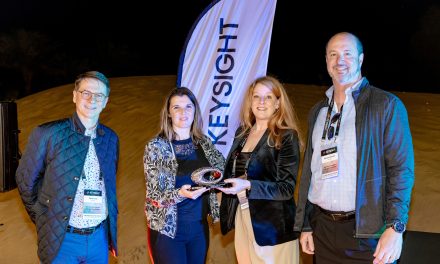 Andy Stafford, Manager of Lean Solutions at ITT Interconnect, explains how a new dynamic 3D modelling website saves hours of design time and helps engineers be more creative
Andy Stafford, Manager of Lean Solutions at ITT Interconnect, explains how a new dynamic 3D modelling website saves hours of design time and helps engineers be more creative
A long-held wish of design engineers has been to shorten the time it takes to come up with an optimum design solution to a particular engineering problem.
Considering innumerable options is very time-consuming and of necessity, sometimes there simply isn’t the time or the resource to work up full CAD drawings of every likely solution.
A new interactive facility on ITT Interconnect Solutions’ website helps design engineers solve this problem by generating connector designs as 3D CAD images interactively over the internet, so more interconnect options can be explored and prototype designs completed more quickly.
Andy Stafford, Manager of Lean Solutions at ITT Interconnect Solutions, explains: “Today’s design engineers are looking for flexibility and tools from connector manufacturers which help reduce time to market for new products. At ITT ICS, we decided to build on the configurator technology and single field search capabilities we already had on our website to offer customers a system which would save time and deliver the ability to import different fully assembled connector solutions straight into their prototype designs.”
The company’s interactive 3D modelling facility enables multiple interconnect designs to be generated and imported into designers’ own CAD systems. Currently, the software supports two industry standard formats – STEP and IGES. The dynamic 3D modelling is free of charge once users are registered on the company’s website.
Engineers can unleash their creativity to develop virtual 3D connectors, including designs, which have never been manufactured before. Once signed onto the site, engineers query their requested standard product using a single search field capability. Within the summarised output, they then directly request the generation of a 3D solid model.
Downloadable selection guide
The system generates a CAD drawing of the new connector and delivers it back to the engineer as a system supplied e-mail link to a downloadable zip file, which can then be imported straight away into the customer’s own CAD system. This allows the engineer to consider multiple interconnect possibilities and select the optimum solution far more quickly than was previously possible.
One of the first customers to generate 3D CAD models was Raymond Burt, Lead Designer, Mechanical Airframe systems Engineering, at Woodward Inc. in the USA.
Woodward Inc. designs and manufactures energy control and optimisation solutions for the aerospace, defence, power generation and transportation markets for OEMS and end customers. Typical applications are commercial and military aircraft and military ground vehicles and other equipment types.
Raymond explains the advantages using the system brought to the first project he tried it out on: “Here at Woodward, we use various Mil-DTL-38999 connectors for our many projects and always use 3D modelling to verify clearances and assembly issues.
I first started using the 3D modelling capability in December 2010. I needed 14 different interconnect models for a control box I was designing. The first time I used this new 3D connector modelling facility, I found it very user-friendly – in fact, it only took me about 15 minutes to specify the first connectors and about 10 minutes later, a link to my models arrived, which was really impressive!
We use Unigraphics version NX6 and I had no problems importing the 3D connector files into my system. On that first occasion, the 3D CAD drawings I downloaded saved me the time it would have taken to model each of them individually, which I estimate at over 40 hours.”
Andy commented: “Customers and potential customers initially register for additional website functions and almost 600 models have been requested to date from 72 customers.
The first interconnects offered on the system were our MIL-DTL-38999 Series III connectors. These KJA connectors are high-density; scoop proof interconnects with corrosion-resistant shells made of aluminium alloy with cadmium over nickel plating, able to withstand 500 hours of exposure to salt spray.
They include an interfacial seal to help prevent electrolytic erosion of contacts, so they are ideal for military and other applications operating in severe high-temperature and vibration environments. Overall, including recently introduced product ranges such as KJA, Nemesis and Trinity, engineers now have a significant number of interconnects and variants within these ranges to try out.
The company’s future planned developments for the 3D web modelling facility include, providing 2D drawings for connectors in industry-standard DXF and Adobe Acrobat PDF formats and, of course, extending the range of connectors for which they can provide 3D models”.


